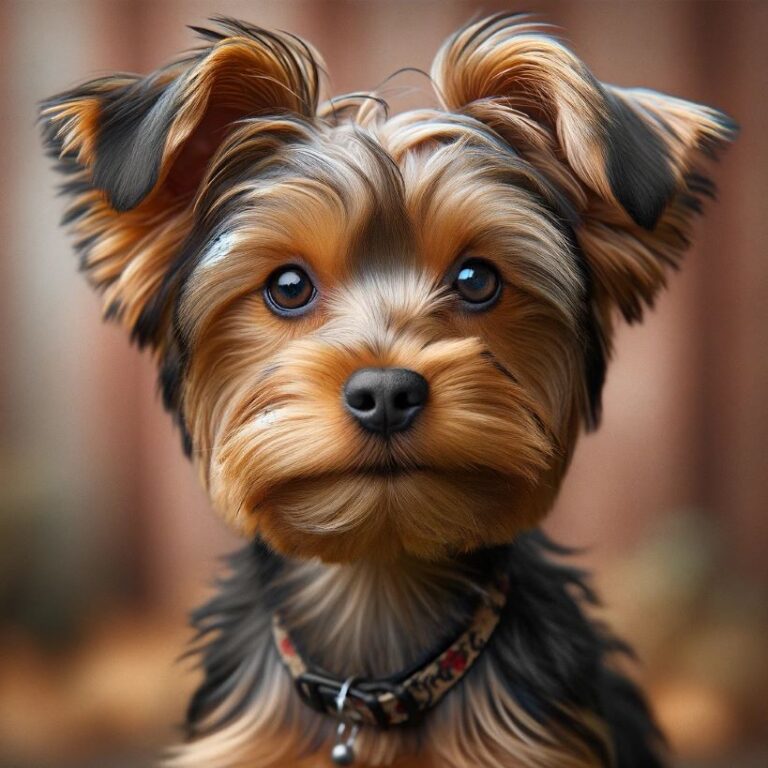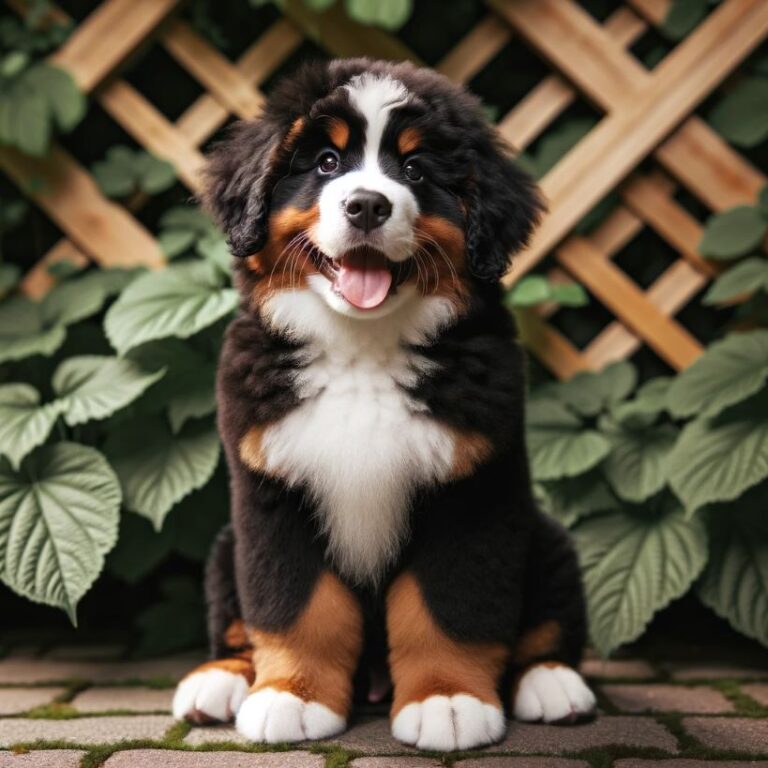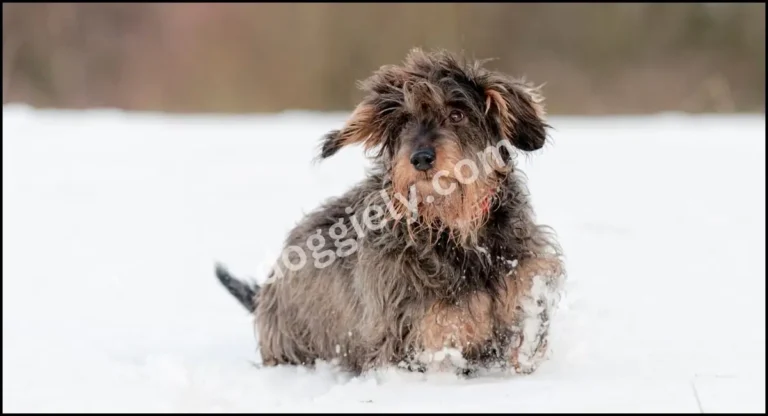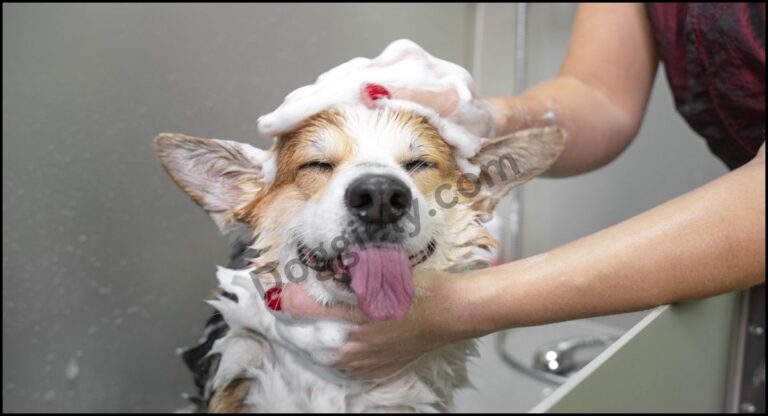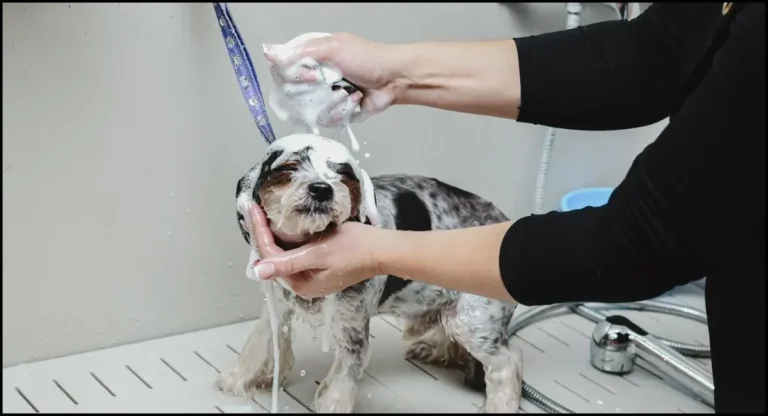Cowboy Corgi Grooming Guide: Best Practices

The Cowboy Corgi is a unique and intriguing dog breed that captures the hearts of many pet enthusiasts. It is a hybrid breed resulting from a cross between an American Cattle Dog, often known as a Blue Heeler, and a Pembroke Welsh Corgi. This combination brings together the best qualities of both parent breeds, resulting in a dog with distinctive characteristics and a charming personality.
Physical Characteristics
- Size: Cowboy Corgis are generally small to medium-sized dogs. They inherit the Corgi’s short stature and the sturdy, muscular build of the Blue Heeler.
- Coat: Their coat can vary, often showing a mix of the Corgi’s thick, fluffy texture and the Blue Heeler’s dense, weather-resistant quality. The color patterns can range from the speckled blue or red of the Heeler to the various shades seen in Corgis, including fawn, black, and tan.
- Ears and Tail: They typically have erect ears and may inherit the Corgi’s shorter tail or the longer tail of a Blue Heeler.
History and Origins of the Cowboy Corgi
The Cowboy Corgi is a fascinating hybrid breed, with a history that intertwines the legacy of two distinct and well-regarded dog breeds: the Pembroke Welsh Corgi and the Australian Cattle Dog, commonly known as the Blue Heeler. Understanding the origins of the Cowboy Corgi requires a look into the histories of these two parent breeds.
Pembroke Welsh Corgi
- Origins: Originating from Pembrokeshire, Wales, the Pembroke Welsh Corgi is an ancient breed, believed to have been brought to Wales by Flemish weavers in the 10th century.
- Role: Traditionally, Corgis were used as herding dogs, particularly for cattle. They are known for their intelligence, agility, and the ability to herd cattle by nipping at their heels and then ducking to avoid kicks.
- Characteristics: Corgis are small, sturdy dogs, known for their short stature, erect ears, and foxy face.
Australian Cattle Dog (Blue Heeler)
- Origins: The Blue Heeler originated in Australia in the 19th century. They were bred by Australian settlers to handle herding cattle on large ranches, often over rough terrain.
- Ancestry: The breed was developed by crossing dogs like the Collie with native Australian Dingoes, and later with other breeds like the Dalmatian and the Kelpie.
- Traits: Known for their endurance, intelligence, and strong work ethic, Blue Heelers are medium-sized, robust, and agile dogs, with a distinctive blue or red speckled coat.
Development of the Cowboy Corgi
- Hybrid Breed: The Cowboy Corgi is a relatively recent development, gaining popularity in the late 20th and early 21st centuries. It is not a naturally occurring breed but rather a deliberate crossbreed.
- Breeding Goals: The intention behind creating the Cowboy Corgi was to combine the best traits of the Corgi and the Blue Heeler. Breeders aimed to create a dog with the Corgi’s compact size and the Blue Heeler’s herding abilities and resilience.
- Popularity: Initially bred in the United States, the Cowboy Corgi quickly gained popularity, especially among those involved in ranching and farming, due to its herding skills, intelligence, and manageable size.
The Modern Cowboy Corgi
Today, Cowboy Corgis are known for their loyalty, intelligence, and energy. They have inherited the strong herding instincts and work ethic from both parent breeds. While they are not recognized by major kennel clubs as a separate breed, they have a dedicated following and are appreciated for their unique blend of characteristics from the Pembroke Welsh Corgi and the Australian Cattle Dog.
Breed Characteristics and Personality Traits
Below is a table that provides a detailed analysis of the Cowboy Corgi breed, focusing on various characteristics and personality traits.
| Characteristic / Trait | Description / Details |
|---|---|
| Breed Type | Hybrid (Pembroke Welsh Corgi and Australian Cattle Dog/Blue Heeler) |
| Size | Small to medium; inherits the compact size of the Corgi with a more muscular build from the Blue Heeler |
| Coat and Color | Coat can be a mix of Corgi’s thick fur and Blue Heeler’s dense coat; colors range from Corgi’s fawn, black, and tan to Blue Heeler’s speckled blue or red |
| Ears | Typically erect and alert, similar to both parent breeds |
| Tail | Varies from the Corgi’s shorter tail to the longer tail of a Blue Heeler |
| Energy Level | High; requires regular exercise and enjoys active playtime |
| Intelligence | Very intelligent, inheriting the smart and problem-solving traits of both parent breeds |
| Temperament | Often friendly and sociable; may exhibit strong herding instincts and alertness |
| Trainability | Highly trainable, responds well to positive reinforcement and consistency |
| Exercise Needs | Needs ample daily exercise and mental stimulation due to high energy levels |
| Sociability with Animals and People | Generally good with other pets and people, especially when socialized from a young age |
| Watchdog Ability | Good; may inherit the Blue Heeler’s protective nature and the Corgi’s alertness |
| Health Concerns | Like all hybrids, may inherit health issues from both parent breeds; common concerns include hip dysplasia and eye problems |
| Lifespan | Typically 12-15 years, depending on health and care |
| Ideal for | Active individuals or families, those looking for a trainable and energetic companion; not ideal for sedentary lifestyles |
Caring and Essential Tips for New Owners
Caring for a Cowboy Corgi requires understanding and catering to their unique needs. These energetic and intelligent dogs are a joy to have, but they also demand attention, exercise, and proper training. Here are some essential tips for new owners to ensure their Cowboy Corgi thrives.
1. Healthcare and Nutrition
- Regular Vet Check-ups: Schedule regular veterinary appointments to monitor their health, including vaccinations and parasite control.
- Balanced Diet: Provide a balanced diet suitable for an active, medium-sized breed. Discuss their dietary needs with your vet, as they may inherit specific dietary sensitivities from their parent breeds.
- Weight Management: Monitor their weight closely, as Corgis can be prone to obesity, which can exacerbate potential joint issues.
2. Exercise and Physical Activity
- Daily Exercise: Cowboy Corgis are energetic and require ample daily exercise to keep them physically and mentally fit. Activities like walking, running, and fetching are great.
- Mental Stimulation: Engage them in mentally stimulating activities such as training sessions, puzzle toys, and agility sports to keep their minds active.
- Playtime: Regular playtime helps in bonding and also in expending their high energy levels.
3. Training and Socialization
- Early Socialization: Expose them to different people, pets, and environments early on to develop a well-rounded temperament.
- Consistent Training: They are intelligent and respond well to training. Use positive reinforcement techniques and be consistent with rules and boundaries.
- Behavioral Training: Given their herding instinct, it’s important to train them not to nip at people’s heels, especially if there are children in the household.
4. Grooming
- Regular Brushing: Their coat, a mix of the Corgi’s and Blue Heeler’s, requires regular brushing to minimize shedding and keep it healthy.
- Bathing: Bathe them as needed, but not so frequently that it dries out their skin.
- Nail Trimming and Dental Care: Regular nail trimming and dental care are important to prevent overgrowth and dental diseases.
5. Creating a Safe Environment
- Secure Space: Ensure they have a secure space at home as they may inherit the Blue Heeler’s tendency to wander or herd.
- Comfortable Resting Area: Provide a comfortable place to rest and sleep, considering their shorter legs and long back.
6. Understanding Their Personality
- Recognize Herding Behavior: Be aware of their herding instinct, especially around children and other pets.
- Companionship: They thrive on companionship and do not like being left alone for long periods.
7. Being a Responsible Owner
- Commitment: Understand that owning a Cowboy Corgi is a long-term commitment that requires time, patience, and love.
- Community Involvement: Engage with local dog owner communities for support and advice, and consider training or agility classes.
Best Diet for a Healthy Cowboy Corgi
Ensuring a healthy diet is crucial for the well-being of a Cowboy Corgi, The optimal diet for a Cowboy Corgi should cater to its specific nutritional needs, considering its energy levels, size, and potential health predispositions. Here are key guidelines to follow:
1. Balanced Nutrition
- High-Quality Dog Food: Choose high-quality commercial dog food that’s appropriate for their size and energy level. Look for foods that list real meat as the first ingredient.
- Protein-Rich Diet: Given their active nature, a protein-rich diet is beneficial for muscle development and energy.
- Balanced Fats and Carbohydrates: Fats are crucial for energy, while carbohydrates provide fiber and other nutrients. However, balance is key to avoid weight gain.
2. Portion Control and Feeding Schedule
- Monitor Portions: Be mindful of portion sizes to prevent obesity, a common issue in Corgis. Follow the feeding guidelines on the dog food packaging and adjust as necessary.
- Regular Feeding Times: Establish regular feeding times, usually twice a day, to maintain a healthy digestive system.
3. Special Dietary Considerations
- Age-Specific Needs: Puppies, adults, and senior dogs have different nutritional requirements. For instance, puppies need more calories and nutrients for growth.
- Weight Management: If your Cowboy Corgi is prone to gaining weight, consider a diet formulated for weight management.
- Health-Specific Diets: If they inherit health issues like hip dysplasia, diets with joint-supporting supplements like glucosamine can be beneficial.
4. Avoid Human Food
- Toxic Foods: Avoid feeding foods that are toxic to dogs, like chocolate, grapes, onions, and xylitol.
- Limited Treats: Treats should only make up a small percentage of their diet. Opt for healthy treats and avoid overfeeding.
5. Hydration
- Access to Fresh Water: Always ensure they have access to clean, fresh water, especially after exercise.
6. Consultation with a Veterinarian
- Regular Check-ups: Regular vet check-ups can help monitor their health and dietary needs.
- Tailored Diet Plans: If your Cowboy Corgi has specific health issues, your vet can recommend a tailored diet plan.
7. Observation and Adjustment
- Monitor Health: Keep an eye on their coat, energy levels, and overall health. These can be indicators of how well their diet suits them.
- Adjustments: Be prepared to adjust their diet as they age or if their health and activity levels change.
A diet that’s tailored to their individual needs will help your Cowboy Corgi maintain a healthy weight, support its energy requirements, and contribute to a long and happy life.
Exercise Needed for Keeping Them Active
The Cowboy Corgi, a lively and intelligent hybrid has specific exercise needs that are crucial for their physical health and mental well-being. These dogs inherit high energy levels and a natural instinct for activity from their parent breeds, making regular exercise an essential aspect of their care. Here’s a guide to understanding and fulfilling the exercise needs of a Cowboy Corgi:
1. Daily Exercise
- Duration: Cowboy Corgis typically require at least 60 minutes of exercise each day. This can be divided into two or more sessions.
- Intensity: Given their energetic nature, they benefit from a mix of moderate to high-intensity activities.
2. Types of Exercise
- Walks: Daily walks are essential, not just for physical exercise but also for mental stimulation. Varied routes can keep walks interesting for them.
- Running and Jogging: They are excellent jogging companions, provided they are gradually accustomed to longer distances.
- Playtime: Engage in play sessions involving fetch, tug-of-war, or other interactive games.
- Agility Training: Their agility and intelligence make them great candidates for agility training, which provides both physical and mental exercise.
- Herding Activities: If possible, activities that mimic herding can be a great way to channel their natural instincts in a constructive manner.
3. Indoor Activities
- Puzzle Toys: On days when outdoor activity is limited, puzzle toys can keep them mentally stimulated.
- Indoor Play: Short play sessions indoors can also help expend some energy.
4. Socialization as Exercise
- Dog Parks: Visiting dog parks can provide both exercise and socialization opportunities.
- Playdates: Arranging playdates with other dogs can be a fun way for them to exercise and interact.
5. Training as Exercise
- Obedience Training: Regular training sessions not only teach discipline but also provide mental exercise.
- Trick Training: Teaching them new tricks keeps their mind active and engaged.
6. Monitoring for Overexertion
- Watch for Signs of Fatigue: While they are energetic, it’s important to ensure they don’t overexert themselves, especially in hot weather.
- Adequate Rest: Ensure they get enough rest between exercise sessions.
7. Adaptability to Owner’s Lifestyle
- Flexible Exercise Regimen: Cowboy Corgis can adapt to various lifestyles, but it’s important to ensure they get enough activity regardless of the type of exercise.
Temperament and Behavior
Understanding the temperament and behavior of a Cowboy Corgi, a unique hybrid is key to ensuring a harmonious relationship between the dog and its owner. These dogs inherit a mix of traits from their parent breeds, resulting in a personality that is both engaging and challenging. Here’s an insight into the temperament and behavior of a Cowboy Corgi:
1. Intelligence and Trainability
- High Intelligence: Cowboy Corgis are extremely intelligent, inheriting their smarts from both parent breeds, known for their problem-solving abilities.
- Trainability: This intelligence makes them highly trainable. They respond well to positive reinforcement techniques but can be stubborn at times.
2. Energy and Activity Level
- High Energy: They possess a high energy level, requiring ample physical and mental stimulation to stay content.
- Need for Activity: Without sufficient exercise, they may exhibit undesirable behaviors like digging, chewing, or barking.
3. Herding Instinct
- Natural Herders: Both parent breeds have strong herding backgrounds. The Cowboy Corgi may exhibit herding behavior, such as chasing and nipping, especially if not properly trained.
- Management: Training and socialization are necessary to manage these instincts, particularly if the dog is around children or other pets.
4. Sociability and Temperament
- Friendly Nature: Generally, Cowboy Corgis are sociable and enjoy being around their human family. They can be good with children and other pets if socialized early.
- Guarding Tendencies: They may inherit the Blue Heeler’s protective nature, making them alert and somewhat wary of strangers.
5. Loyalty and Attachment
- Bonding: They often form strong bonds with their owners and can be quite affectionate.
- Separation Anxiety: This strong attachment can lead to separation anxiety if left alone for prolonged periods.
6. Adaptability
- Adaptable to Various Environments: While they do best with space to run and play, they can adapt to different living situations if their exercise needs are met.
7. Independence vs. Attention Seeking
- Balancing Independence: Cowboy Corgis are known for their independent streak, inherited from their cattle dog lineage.
- Need for Attention: However, they also crave attention and interaction with their owners.
8. Vocalization
- Tendency to Bark: They can be vocal, often barking to alert their owners or when they want attention. Training can help manage excessive barking.
The Cowboy Corgi is a complex, multifaceted breed that requires an owner who understands and appreciates their unique blend of traits.
With the right care and attention, a Cowboy Corgi can be an incredibly rewarding companion, known for its loyalty, intelligence, and vivacious spirit.
Cowboy Corgi vs. Traditional Corgis
Here’s a detailed comparison:
| Feature | Cowboy Corgi | Pembroke Welsh Corgi |
|---|---|---|
| Origin | Hybrid breed (Corgi x Australian Cattle Dog) | Purebred, originating from Wales |
| Size | Small to medium, varies more due to hybrid nature | Small, with a consistent size range |
| Body Shape | Often a blend of both parents; can be more muscular than Corgis | Long, low-set body; distinctively short and stout |
| Coat | Can vary greatly; may have the thicker coat of a Corgi or the shorter coat of a Blue Heeler | Thick, double coat that can be medium to long |
| Coat Colors | Wide range, including speckled patterns from the Blue Heeler and Corgi colors | Red, sable, fawn, black and tan, mostly with white markings |
| Ears | Generally erect, size and shape can vary | Medium size, erect, set directly on top of the head |
| Tail | Can vary from short to full length | Often docked in countries where it’s legal; naturally short or long |
| Temperament | Highly energetic, intelligent, can have strong herding instincts | Outgoing, friendly, and active, with a strong herding instinct |
| Exercise Needs | High, requires ample physical and mental stimulation | High, needs regular exercise and mental engagement |
| Training | Highly trainable but may inherit some stubbornness from the Blue Heeler | Very trainable, responds well to positive reinforcement |
| Health | May inherit health issues from both breeds; hybrid vigor can play a role | Prone to certain breed-specific issues like hip dysplasia, PRA |
| Lifespan | 12-15 years (varies depending on health and genetics) | Typically 12-15 years |
| Best Suited For | Active individuals/families, those who can provide ample exercise and engagement | Families, active individuals, suitable for various living situations but require exercise |
Common Health Issues and How to Address Them
Here is a table that analyze the common health issues in Cowboy Corgis and their management. Here’s a detailed overview:
| Health Issue | Description | Prevention | Treatment |
|---|---|---|---|
| Hip Dysplasia | A genetic condition where the thigh bone doesn’t fit snugly into the hip joint. | Maintain a healthy weight, proper nutrition, and regular exercise to alleviate stress on the joints. | Pain management, physical therapy, supplements like glucosamine, and in severe cases, surgery. |
| Progressive Retinal Atrophy (PRA) | A degenerative eye disorder leading to blindness. | Regular eye exams to monitor vision changes. | No cure, but managing the condition includes making accommodations for a blind pet and safety measures at home. |
| Intervertebral Disc Disease (IVDD) | Spinal condition where discs bulge or burst, causing pain, nerve damage, or paralysis. | Avoid activities that strain the spine, maintain a healthy weight, and use ramps/stairs for furniture access. | Conservative treatments like rest and anti-inflammatory medications or surgery in severe cases. |
| Deafness | Hereditary deafness, potentially from the Blue Heeler lineage. | Regular hearing checks, especially if there are signs of hearing loss. | Training with hand signals and ensuring the safety of a deaf dog. There’s no cure for congenital deafness. |
| Obesity | Excess body weight, leading to various health problems. | Controlled diet, avoiding overfeeding, and providing regular exercise. | Diet plan, increased exercise, and regular weight monitoring. Consult a vet for a tailored diet and exercise regimen. |
| Dental Issues | Problems like tartar build-up, gum disease, or tooth loss. | Regular dental hygiene, including teeth brushing and dental chews. | Professional dental cleanings and treatments, dental surgeries if necessary. |
Interactive Toys and Games for Your Cowboy Corgi
| Type of Toy/Game | Description | Benefits | Recommendations |
|---|---|---|---|
| Puzzle Toys | Toys that hide treats and require problem-solving to access them. | Stimulates mental activity and reduces boredom. | Choose varying difficulty levels to keep them engaged. |
| Tug-of-War Toys | Sturdy toys designed for pulling games. | Good for physical exercise and teaching control. | Ensure the toy is durable and teach a ‘release’ command. |
| Fetch Toys | Balls, frisbees, and similar items for fetching. | Encourages exercise and interactive play. | Use soft, durable toys to protect their teeth. |
| Chew Toys | Toys meant for chewing, including rubber toys and bones. | Satisfies chewing instincts, good for dental health. | Select size-appropriate, durable chew toys. |
| Agility Equipment | Equipment for setting up agility courses, like hurdles or tunnels. | Enhances physical fitness and mental stimulation. | Start with simple equipment and increase complexity. |
| Hide and Seek Games | Hiding treats or toys for your dog to find. | Utilizes their natural sniffing abilities. | Start easy and gradually increase difficulty. |
| Herding Balls | Large balls that can be pushed but not picked up. | Channels their natural herding instinct. | Ensure the ball is too big to bite and indestructible. |
| Training-Based Games | Games that incorporate obedience training and tricks. | Reinforces training, provides mental stimulation. | Incorporate commands and tricks they know or are learning. |
| Interactive Play | Games that involve direct interaction with the owner. | Strengthens the bond, provides mental engagement. | Include activities like ‘follow the leader’ or ‘Simon Says’. |
Creative and Fun Activities to Do With Your Cowboy Corgi
| Activity | Description | Benefits | Tips for Best Experience |
|---|---|---|---|
| Agility Training | Navigating through obstacle courses. | Improves fitness, agility, and mental stimulation. | Start with basic obstacles and gradually increase difficulty. |
| Hiking Adventures | Exploring trails and nature paths. | Physical exercise, exploration, and new experiences. | Ensure the trail is dog-friendly; bring water and snacks. |
| Water Play | Swimming or playing in water bodies. | Excellent for hot days, low-impact exercise. | Always supervise and ensure safety in water. |
| Hide and Seek | Hiding and having your dog find you or treats. | Utilizes their sniffing and problem-solving skills. | Start with easy hiding spots and praise when they find you. |
| DIY Puzzle Games | Creating homemade puzzles with treats. | Mental stimulation and problem-solving. | Use safe, non-toxic materials; vary the puzzles for interest. |
| Fetch Variations | Playing fetch with different rules or objects. | Enhances listening skills and provides exercise. | Introduce new commands or use different toys. |
| Herding Games | Games that mimic herding tasks. | Channels natural instincts in a controlled manner. | Use large balls or safe objects that they can herd. |
| Interactive Walks | Engaging walks where you train or explore new environments. | Socialization, mental, and physical exercise. | Change routes regularly, and incorporate training sessions. |
| Canine Sports | Participating in dog sports like flyball or disc dog. | Competitive fun, physical and mental workout. | Join local clubs or groups for organized events. |
| Trick Training | Teaching new tricks or commands. | Mental stimulation and strengthens communication. | Be patient, use positive reinforcement. |
Cowboy Corgi and Allergies
Here is a table that analyze the relationship between Cowboy Corgis and allergies is an effective way to present what potential owners should know, especially regarding allergen triggers and management strategies. Here’s an overview:
| Aspect | Details |
|---|---|
| Allergy Triggers | Cowboy Corgis can be sources of allergens due to their fur, dander, and saliva. |
| Coat Shedding | They tend to shed moderately to heavily, depending on their coat type inherited from parents. |
| Grooming and Allergies | Regular grooming can help reduce the amount of hair and dander in the environment. |
| Bathing Frequency | Regular baths can help reduce allergens, but not so frequent as to dry out their skin. |
| Living Environment | Vacuuming and air purifiers can help reduce allergens in the home. |
| Hypoallergenic Breeds | Cowboy Corgis are not hypoallergenic. Consider this if you have severe allergies. |
| Allergy Testing | Potential owners with allergies should consider allergy testing before adopting. |
| Medical Advice | Consulting with a doctor for allergy management is advisable if you have known pet allergies. |
| Allergy Adaptations | Some people develop a tolerance to their pet’s dander over time, but this varies. |
| Health Impact | Allergies can range from mild discomfort to severe reactions; impact varies by individual. |
conclusion
The Cowboy Corgi are known for their intelligence, energy, and unique coat patterns and colors. They inherit the herding instincts and hardworking nature from their parent breeds, making them excellent companions for active families or individuals.
Their adaptable size and amiable temperament make them suitable for various living environments, provided they receive adequate exercise and mental stimulation. While they require regular grooming due to their shedding coats, the joy and companionship they offer far outweigh the maintenance.
faq
1. What is a Cowboy Corgi? -A Cowboy Corgi is a hybrid breed created by crossing a Pembroke Welsh Corgi with an Australian Cattle Dog, also known as a Blue Heeler.
2. How big do Cowboy Corgis get? – Cowboy Corgis are generally small to medium-sized dogs. They typically weigh between 25 and 35 pounds and stand around 13 to 20 inches tall at the shoulder.
3. What are the coat colors and patterns of Cowboy Corgis? =They can have a variety of coat colors and patterns, including blue, red, black, and tan, often with speckled or mottled patterns from the Blue Heeler side and sometimes the fluffier texture of the Corgi.
4. Do Cowboy Corgis shed a lot? = Yes, they tend to shed moderately to heavily, especially during seasonal changes. Regular grooming is necessary to manage their shedding.
5. Are Cowboy Corgis good family pets? – Yes, they can be excellent family pets. They are known for being affectionate, loyal, and good with children when properly socialized.
6. How much exercise do Cowboy Corgis need? -They are an energetic breed and require regular exercise. Daily walks, playtime, and mental stimulation are essential for their well-being.
7. Are Cowboy Corgis easy to train? – Cowboy Corgis are intelligent and generally respond well to training. However, they can be somewhat stubborn, so consistent, positive reinforcement training methods work best.
8. What health issues are Cowboy Corgis prone to? – Like all breeds, they can inherit health issues from their parent breeds, such as hip dysplasia, progressive retinal atrophy (PRA), and intervertebral disc disease (IVDD).
9. What is the lifespan of a Cowboy Corgi? – Their average lifespan is around 12-15 years, depending on their overall health and care.
10. How do I find a reputable Cowboy Corgi breeder? – Look for breeders who provide health clearances for both parent breeds and who are transparent about their breeding practices. Avoid puppy mills and pet stores.
11. Can Cowboy Corgis live in apartments? – They can adapt to apartment living if they are given sufficient exercise and mental stimulation, but they do best in homes with more space to move around.
12. Do Cowboy Corgis have a strong herding instinct? – Yes, they often inherit the herding instinct from both parent breeds and may exhibit behaviors like chasing or nipping. Training can help manage these instincts.
